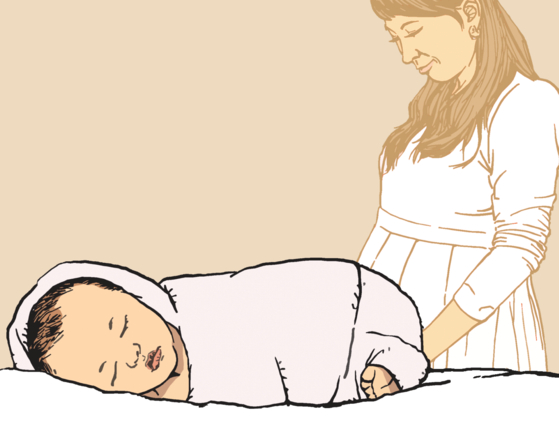The death cross

The author is the head of the innovation lab at the JoongAng Ilbo.
A “death cross” is the nickname for the moment when a stock’s short-term moving average goes below its long-term moving average. It signals a transition to a bearish market. In Korea, it is often called a “dead cross.”
A dead cross population happens when the number of deaths is higher than the number of births, resulting in a natural decline in population. The origin is the “Russian cross.” In 1991, when the Soviet Union fell, the population in former member states, including Russia, and Eastern European countries decreased. The death rate rapidly increased due to poverty, famine and alcoholism while the birth rate fell sharply.
The natural decline of Russia’s population continued for more than 20 years after the death cross in 1991. The fertility rate began to recover in 2006, thanks to economic growth and incentives. The number of births finally exceeded the number of deaths in 2013.
Last year, Korea saw its first “population death cross.” It came nine years earlier than the government’s prediction that it would happen in 2029. According to the 2020-2070 Future Population Estimation” by Statistics Korea, the annual natural decline of population will begin with 30,000 in 2020 and grow to 510,000 in 2070. As a result, the population will shrink from 51.84 million to 37.66 million in 2070.
Aging will also be a serious issue. In 2020, 16 out of 100 Koreans were aged over 65, but the number will increase to 46 in 2070. The proportion of the population under 14 has fallen from 42 out of 100 in the 1960s to 21 in 2000 and to 12 in 2020. By 2070, less than 8 out of 100 people will be under age 14.
This is based on a calculation assuming that the current fertility rate of 0.84 children will be maintained. If the Covid-19 pandemic continues for much longer, the total population will shrink to 33 million in 2070.
An earlier-than-expected death cross is largely due to the tendency of delaying marriage and childbirth because of the pandemic. Countries that were hit hard by the pandemic, such as the United States, Italy and Spain, also saw a drop in the fertility rate last year.
In the United States, the number of home births last year was 45,646, a record high since 1990. So many mothers chose to give birth at home, because of the overcrowding in hospitals and fear of potential infection.
I am worried that the pandemic in Korea is starting again. Systematic and psychological support for mothers to feel safe and have children will be an important policy incentive if Korea wants to beat its population death cross.










with the Korea JoongAng Daily
To write comments, please log in to one of the accounts.
Standards Board Policy (0/250자)